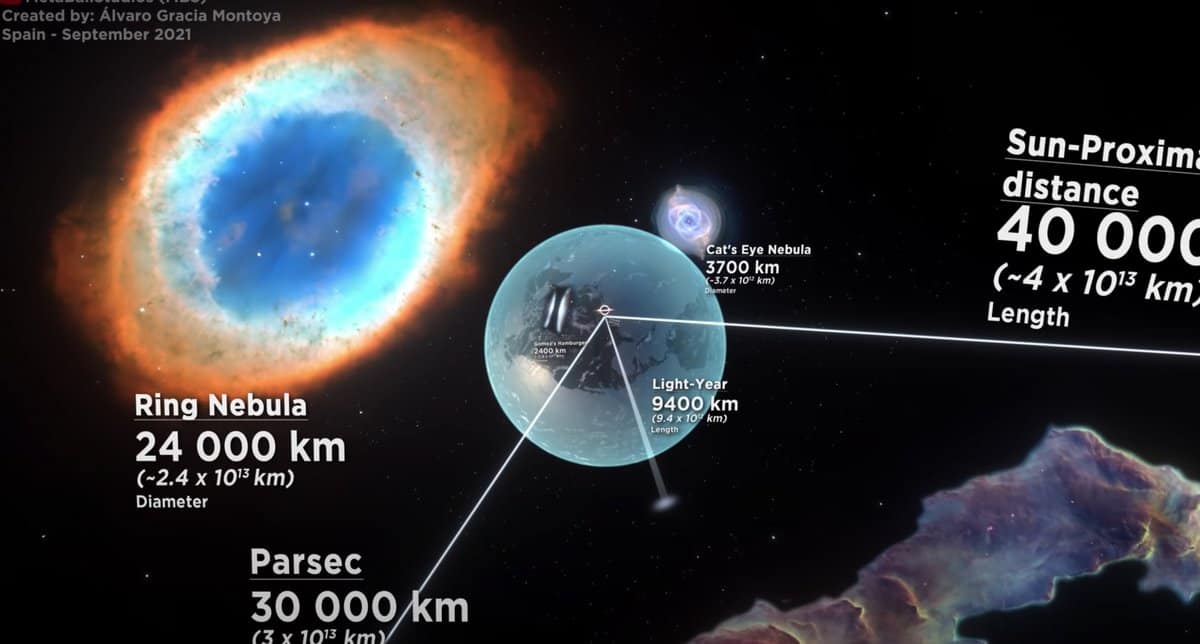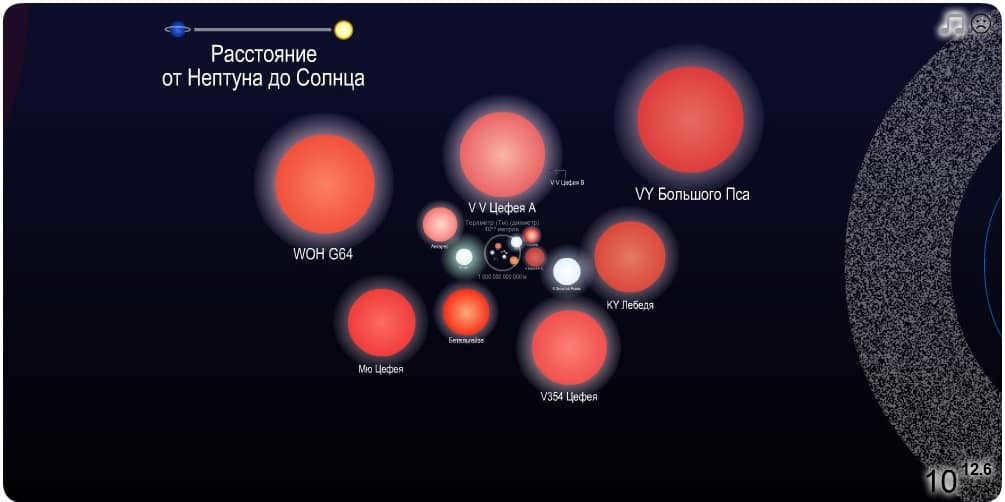
Experience the interactive scale of the Universe online: explore the actual dimensions of the universe, compare space objects, planets, stars, clusters, galaxies.
When we talk about dimensions, we often refer to alternate realities or our perception of the world around us. However, there’s much more to dimensions than meets the eye. And perhaps the most accurate way to understand the scale of the universe is through the lens of physics.
Physicists propose that measurements represent distinct aspects of perceiving the magnitude of the cosmos. For instance, the initial four dimensions encompass length, breadth, height, and time. Nonetheless, in line with quantum physics, there exist additional dimensions that delineate the essence of the universe and conceivably all universes. Numerous scientists maintain that there presently exist approximately 10 dimensions.
An interactive measurement of the scale of the cosmos
Calculating the magnitude of the Universe
The initial dimension, as previously stated, is length. A prime example of a one-dimensional entity is a straight line. This line solely possesses the length dimension. The second dimension is width. This dimension encompasses length, and a notable representation of a two-dimensional entity would be an impossibly thin plane. Objects in two dimensions can only be observed in cross-section.
The third dimension comprises height, and this dimension is the most familiar to us. When combined with length and width, it forms the most easily discernible aspect of the cosmos in terms of dimensions. A cube is the most fitting physical form to depict this dimension. The third dimension comes into existence when length, width, and height intersect.

A hierarchical scale of the measurements of the cosmos
Now the situation becomes slightly more intricate as the remaining 7 measurements are connected to intangible concepts that we are unable to directly perceive, but are aware of their existence. The fourth measurement is time. It represents the distinction between the past, present, and future. Therefore, the most accurate depiction of the fourth measurement would be chronology.
The other dimensions are concerned with probabilities. The fifth and sixth dimensions are concerned with the future. According to quantum physics, there can be numerous potential futures, but only one outcome, and this is due to choice. The fifth and sixth dimensions are linked to the branching of each of these probabilities. Essentially, if one could manipulate the fifth and sixth dimensions, they could travel back in time or explore different versions of the future.
Dimensions 7 to 10 are connected to the universe and its scale. They are based on the existence of multiple universes, each with its own series of dimensions of reality and potential outcomes. The tenth and final dimension encompasses all possible outcomes of all universes.
Interactive
An interactive panorama showcasing the mesmerizing beauty of the Milky Way galaxy.
Experience a realistic model of a galaxy collision, allowing you to witness the incredible forces at play.
Explore the vastness of the universe with a scale model that demonstrates the sheer magnitude of celestial objects.
Dive into a 3D representation of our Solar System, getting up close and personal with each planet and their unique features.
Embark on a virtual journey to Mars with a detailed surface map that reveals the planet’s intriguing landscapes.
Immerse yourself in the panoramic view of Mars, taking in its stunning vistas and rocky terrain.
Get a closer look at the Moon with a captivating 3D model that showcases its craters and lunar features.
Step into a visual planetarium and explore the wonders of the night sky, learning about constellations and celestial bodies.
Discover the cutting-edge Alma radio telescopes and learn about their role in unraveling the mysteries of the universe.
Track the vast amount of orbital debris around Earth with an interactive map that highlights their positions.
Take a journey through the Milky Way with the innovative Milky Way Chromoscope, revealing the hidden wonders of our galaxy.
Stay up-to-date with the latest position of Mars rovers with a detailed map that shows their current locations.
Explore the ever-growing list of exoplanets with an interactive tool that provides information on these distant worlds.
Uncover the impact sites of meteorites around the world with an interactive map that showcases their locations.
Discover the vast array of orbiting satellites with a comprehensive map that displays their paths and orbits.
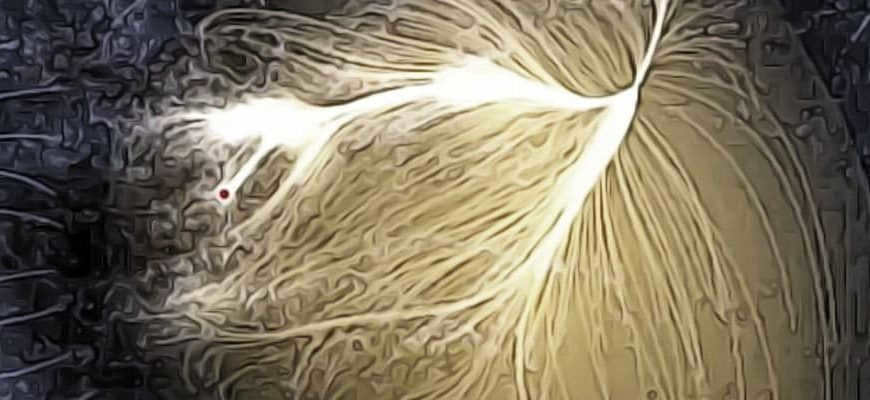
We are aware that the Universe is the abode of immense celestial bodies. And the gaps between them are vast in comparison to Earth’s standards. On a cosmic level, Earth appears minuscule, resembling a mere grain of sand. Even within our own solar system, there exist significantly larger entities. For instance, the planet Jupiter (capable of accommodating over 1000 Earth-like bodies) and the Sun (with a volume exceeding that of a million planets similar to ours).
Gigantic stars
However, the Sun appears minuscule in comparison to the colossal stars we are aware of. The Sun, classified as a yellow dwarf, is a relatively modest star when considering the vastness of the Universe. There exist stars in outer space that are significantly larger than the Sun. UY Shields holds the record for being the largest known star, with a diameter 1900 times greater than that of the Sun. Additionally, UY Shields boasts a mass 30 times greater. This indicates that mass and size do not necessarily have a linear relationship.
The roster of expansive celestial entities must naturally encompass black holes. This holds especially true for supermassive black holes, which are typically situated at the heart of galaxies. Our own galaxy harbors such a black hole, boasting a mass that is 4 million times that of the Sun. One of the most colossal supermassive black holes ever detected resides within the elliptical galaxy NGC 4889. This entity outweighs the Sun by a staggering 21 billion times.
However, in the vast expanse of the cosmos, there exist entities that surpass even the enormity of supermassive black holes. These entities are known as galaxies, which encompass a multitude of star systems and everything contained within them, such as planets, stars, asteroids, comets, dwarf planets, gas, dust, and more. Our very own Milky Way galaxy spans approximately 100,000 light-years in diameter. Definitively determining the largest galaxies is a challenging task, as they lack precise boundaries. Nevertheless, we have discovered galaxies that extend across millions of light-years. One such colossal galaxy is IC 1101, boasting a size that is 50 times greater than that of the Milky Way and a mass that is approximately 2,000 times more substantial. With a span of about 5.5 million light-years, IC 1101 reigns as the largest known galaxy.
Nebulae and clusters
In the vast expanse of space, there are also mesmerizing formations known as nebulae. These awe-inspiring structures are massive clouds of gas, each with its own unique characteristics. One particularly remarkable nebula is the NGC 604, often hailed as one of the largest in existence. Stretching across an incredible distance of 1,520 light-years, it leaves astronomers and stargazers in awe of its sheer magnitude.
But the wonders of the universe don’t stop there. Beyond nebulae, the largest structures that can be found are clusters. These clusters form when galaxies, such as our very own Milky Way, are gravitationally bound together in groups known as galaxy clusters. The Milky Way is just a small part of a larger Local Group, which includes around two dozen galaxies, including the majestic Andromeda Galaxy. For a long time, astronomers believed that these galaxy clusters were the largest structures in the universe. However, in the 1980s, they made a groundbreaking discovery – these galaxy clusters themselves are bound together by gravity, forming even larger structures known as superclusters.
The Great Wall of Hercules, the Northern Corona, is the most colossal super cluster ever discovered in the Universe. Its immense size means that it takes approximately 10 billion years for light to traverse this structure. To put this into perspective, the Universe itself is estimated to be around 13.8 billion years old.
Noteworthy entities within our solar system
When compared to the vastness of the Great Wall of Hercules-North Corona, the solar system appears minuscule.
Nevertheless, here is a compilation of some of the largest entities within our solar system:
– The most gigantic planet is Jupiter, boasting a diameter of approximately 142,984 kilometers. This is roughly 11 times the size of Earth;
– The largest moon is Ganymede, which orbits around Jupiter and has a diameter of about 5,268 kilometers. Remarkably, Ganymede is even slightly larger than Mercury;
– Mariner Valley on Mars is the most extensive canyon, stretching over 3,000 kilometers in length, 600 kilometers in width, and 8 kilometers in depth;
– The Utopia Plain on Mars is home to the largest crater, with an estimated diameter of 3,300 km. This crater served as the landing site for the Viking 2 spacecraft in 1976;
– Vesta takes the title of the largest asteroid, measuring approximately 530 kilometers in length. It resides in the asteroid belt located between Mars and Jupiter;
– Pluto, the largest dwarf planet, boasts a diameter of 2,370 kilometers. Previously, it was believed that Erida was larger than Pluto, but the New Horizons mission in 2015 disproved this notion through precise measurements.
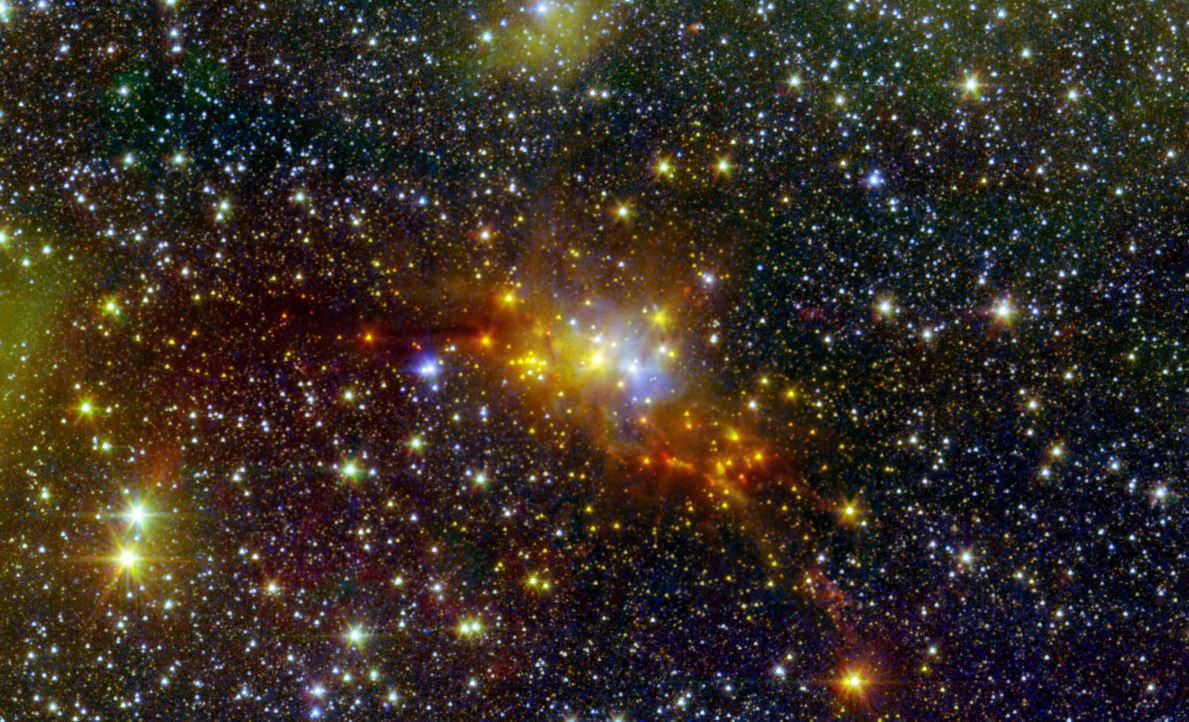
The Universe is an immense expanse that encompasses numerous galaxies, stars, planets, and other celestial bodies. Its magnitude is truly staggering. Let us delve into the question of whether or not they can be quantified.
The vastness of the Universe
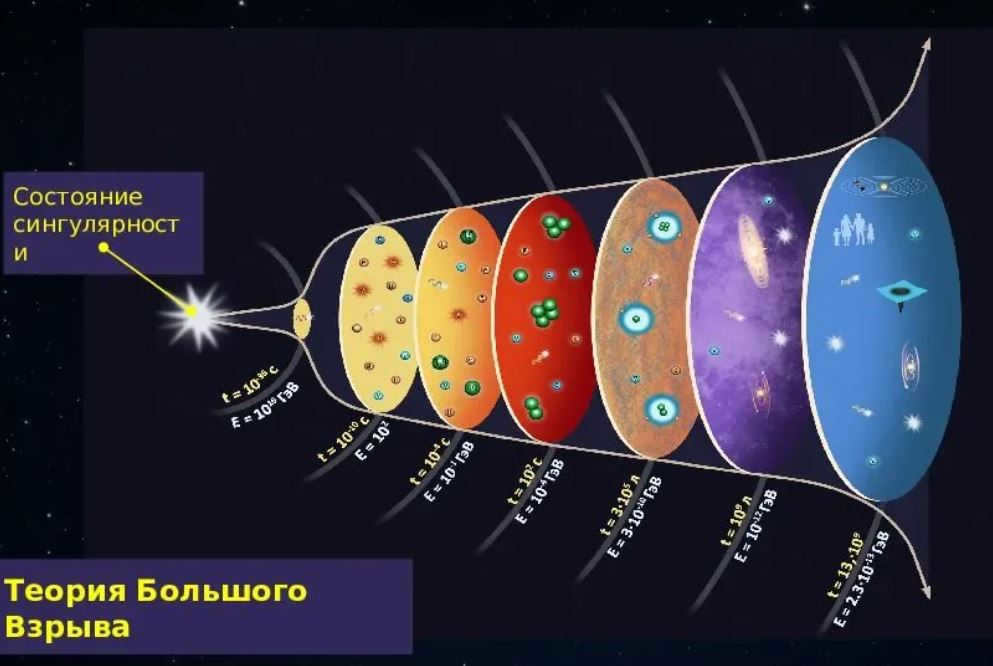

The vastness of the Universe can be measured through the field of cosmic astronomy. Astronomers employ powerful telescopes to observe far-off galaxies and calculate the vast distances that separate them. They also analyze cosmic radiation to deduce the age of the Universe and its ongoing expansion.
Based on current scientific knowledge, the Universe originated approximately 13.8 billion years ago with the explosive event known as the Big Bang. Since then, it has been continuously expanding, steadily increasing in size. The latest estimate puts the diameter of the Universe at around 93 billion light years.
Calculation of sizes
Astronomers employ various techniques to determine the dimensions of the universe:
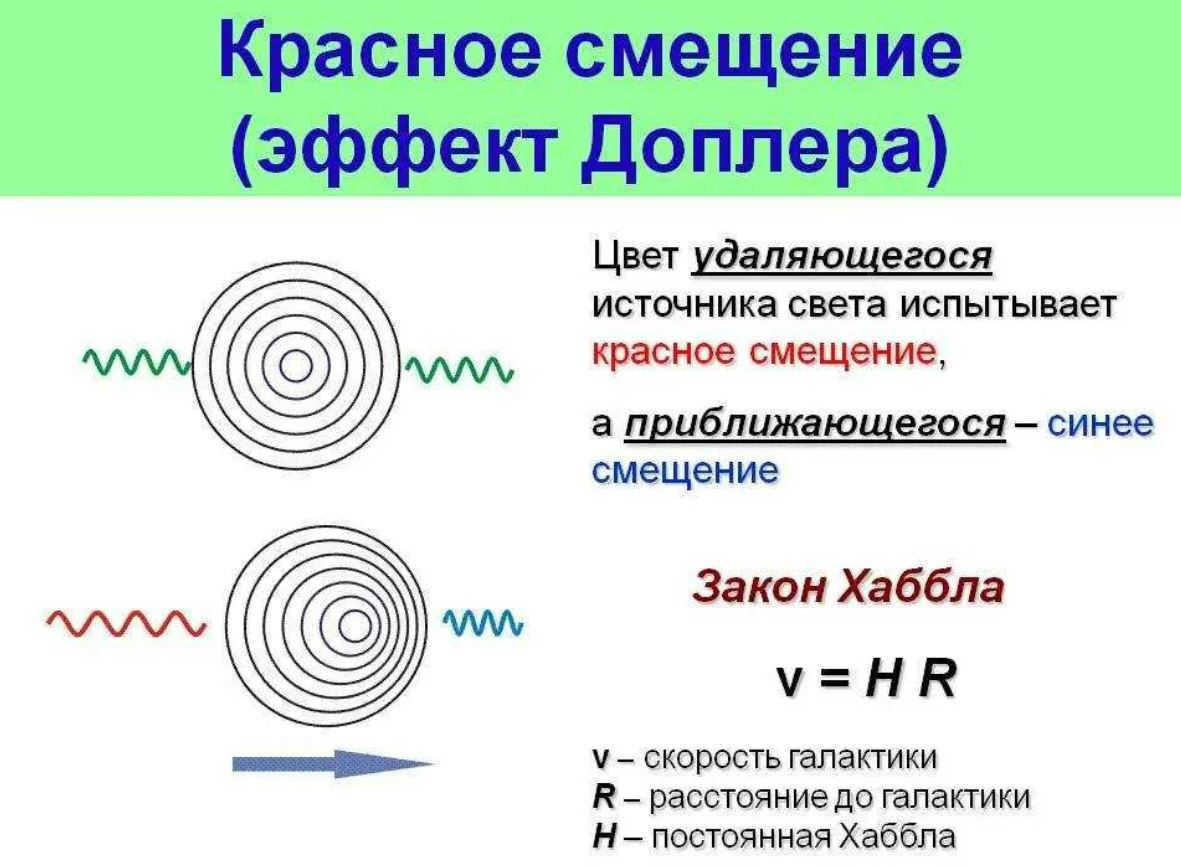

- Quantifying the redshift
This phenomenon is known as redshift, which occurs when light from galaxies located far away is shifted towards the red end of the spectrum as a result of the expansion of the Universe.
By measuring the redshift, astronomers can calculate the distance to galaxies and gain insight into the overall scale of the universe.


Cosmic rays are abundant particles present throughout the cosmos. The examination of this phenomenon enables astronomers to ascertain the universe’s age and constituents.
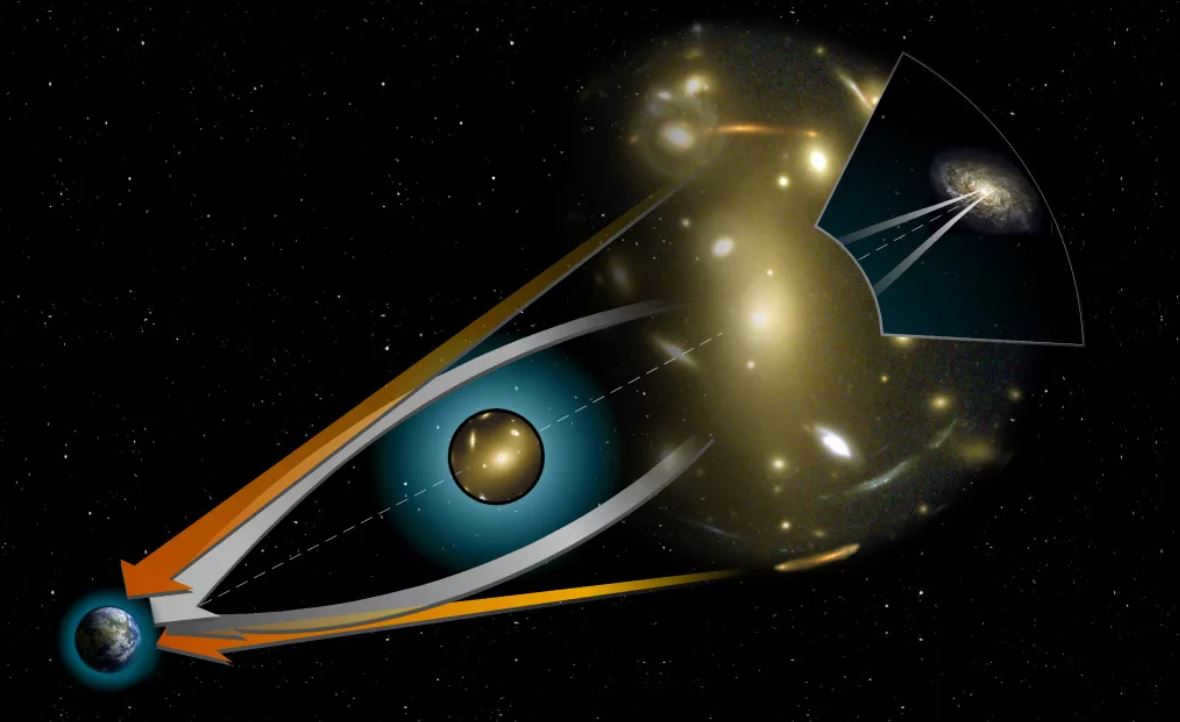

The real size of the universe can be mind-boggling, and one way to understand it is through the phenomenon of gravitational lensing. Gravitational lensing occurs when light from far-off galaxies is deflected as it travels through massive cosmic objects.
Currently, the accepted units of measurement include:
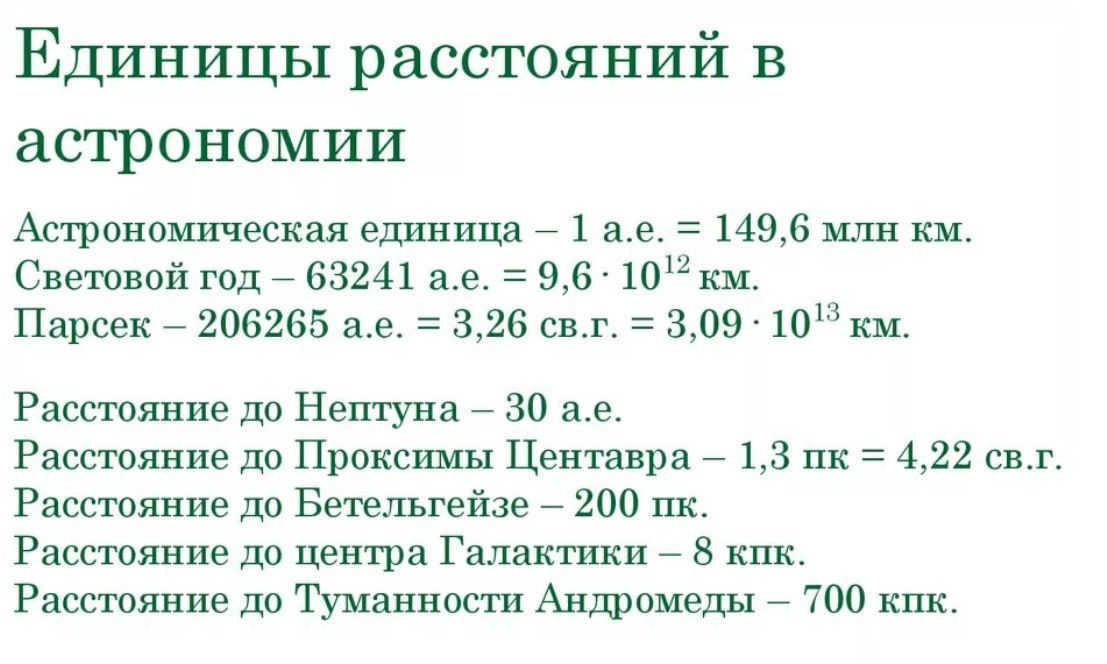

- Light-year. The light-year is the distance that light travels in one Earth year. It is equivalent to 9.46 trillion kilometers.
- Parsec. The parsec is the distance at which a star has a parallax of one arc second. It is approximately 3.26 light-years or about 30.86 trillion kilometers.
- Megaparsec. The megaparsec is a distance equal to one million parsecs. It is approximately 3.26 million light years or 30.86 million trillion kilometers.
When it comes to measuring the vastness of the Universe, we encounter mind-boggling distances. Take, for instance, the distance to the closest star, Proxima Centauri, which is estimated to be around 4.24 light-years or a staggering 40.1 trillion kilometers. As for the farthest galaxy we know of, its distance is only roughly known, but it’s believed to be about 13.4 billion light-years or 4.1 megaparsecs away.
Structure of the Universe on a Grand Scale
The grand scale distribution of galaxies and groups of galaxies within the Universe is known as the large-scale structure. Cosmology, the study of the Universe as a whole, explores this phenomenon and delves into the structure and evolution of the Universe. On a grand scale, galaxies are not evenly spread out in space, but rather congregate in clusters, superclusters, and filaments, forming colossal structures. Galactic groups usually consist of a small number to a few hundred galaxies, while supergroups contain multiple such subgroups.

Filaments are extensive formations consisting of clusters and superclusters of galaxies that stretch across vast distances in all directions.
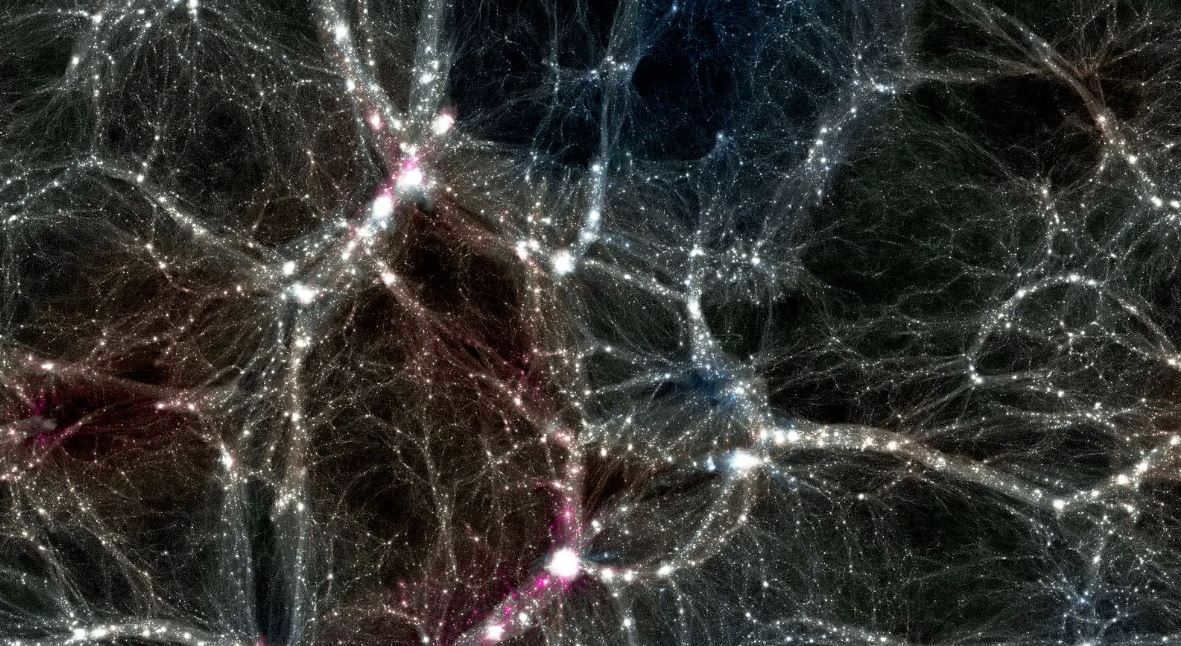
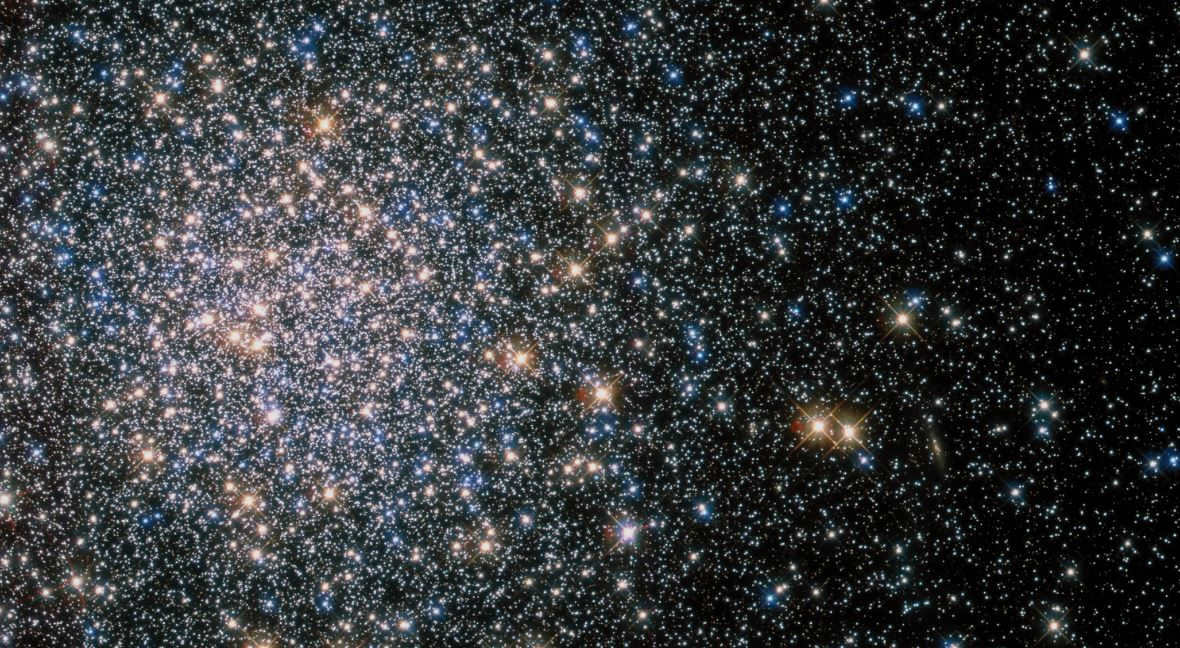
The Devil’s Helmet and Pandora’s Box supergroups of galaxies, along with filaments like The Cosmic Web and The Elephant’s Trunk, are the most notable instances of large-scale structures.
These structures are of great importance and are set to be the focus of extensive research in 2023.
Latest information
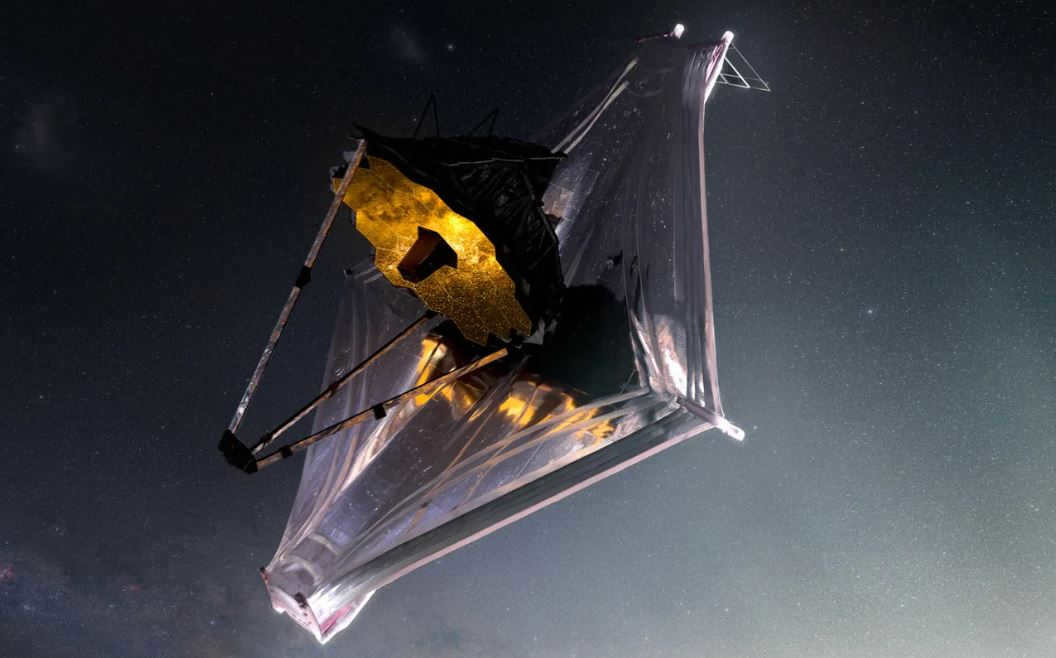
Joel Ledge from the University of Pennsylvania has proposed a surprising revelation about the James Webb spacecraft, which was launched last year. According to Ledge, there is a possibility that numerous galaxies could actually be black holes.
In a remarkable discovery, astronomers have come across galaxies of such enormous size that it has prompted them to reconsider the current scientific understanding of how the universe was formed. This groundbreaking revelation was reported by Science Daily. To validate this new information, scientists will need to capture spectral images of these massive galaxies, which will bring us one step closer to unraveling the mysteries of the universe’s age.
Engaging Trivia
Let’s delve into 6 intriguing facts that are worth discovering if you have an interest in the cosmos:
- Our Milky Way galaxy constitutes only a fraction of the vast expanse that is the universe. This expansive realm is teeming with over 100 billion galaxies.
- The Small Quasar 2 takes the crown as the largest known galaxy. Spanning approximately 6 million light years in diameter, it boasts an astonishing array of over 100 trillion stars.
- The universe is undergoing an expansion of epic proportions, propelled by the enigmatic force known as dark energy. As a result, the gap between remote galaxies continues to widen incessantly.
- Speculation abounds regarding the universe’s potential involvement in a myriad of parallel worlds, suggesting the existence of multiple parallel universes.
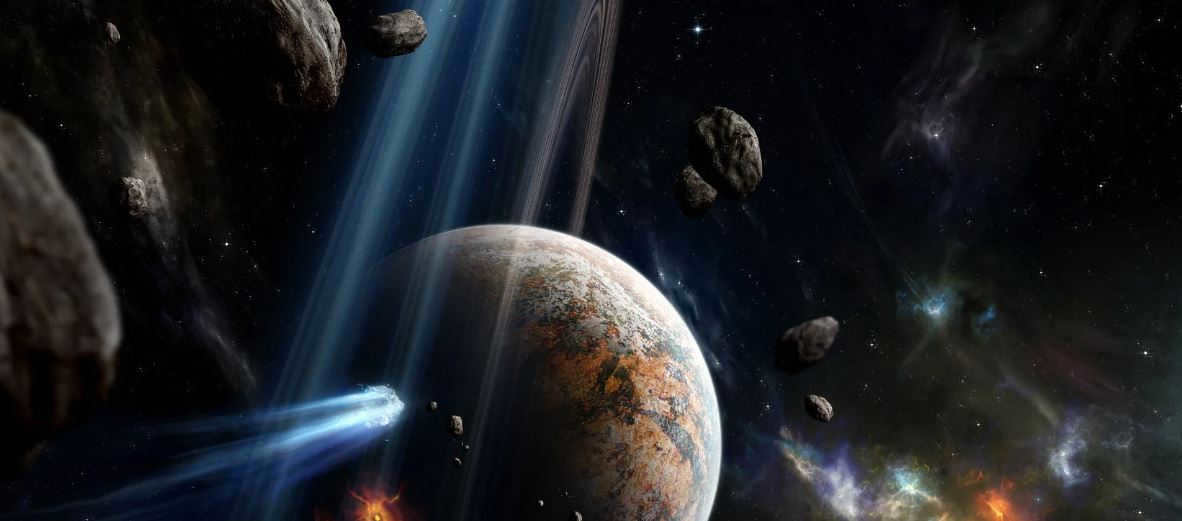

- A significant portion of the cosmos is comprised of enigmatic dark matter and dark energy, which lack electromagnetic radiation. This poses challenges in directly observing them.
- The farthest known galaxy is GN-z11, located 32 billion light years away.
The magnitude of the cosmos is immense and can be quantified in numerous manners, yet determining its precise volume remains a topic of ongoing research and debate within the scientific community.
Video: What is the size of our universe?
A visual comparison of the sizes of known planets and stars (4 images)
Have you ever wondered how the sizes of planets and stars stack up against each other? They are vastly different…
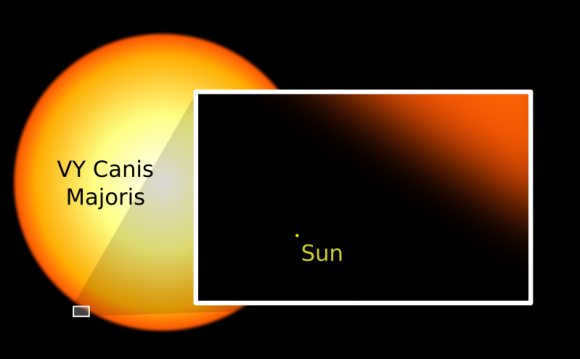
One
Do you ever ponder what the planets resemble in comparison to one another? – I, for one, have pondered this multiple times, yet I couldn’t envision the amount of difference there is between them. I have consistently been interested in comparing them, at least in approximate proportions… After searching through a large number of images, I came across a picture that closely matched the required parameters. I attempted to show in it how small our planet is in comparison to the Sun, but the most fascinating part is that there are numerous stars much larger than the Sun, tens of thousands and even more times. This article presents a visual comparison of the sizes of the planets in the solar system and some well-known stars, along with their main physical characteristics. 1. Mercury is the smallest planet in the Earth group. Its radius is only 2439.7 ± 1.0 km. The planet’s mass is 3.3022×1023 kg (0.055 times the mass of Earth). Mercury’s average density is quite high – 5.43 g/cm³, which is just slightly less than the density of Earth (0.984 times Earth’s). Its surface area (S) is 6.083×1010 km² (0.147 times Earth’s). 2. Mars is the fourth planet farthest from the Sun (after Mercury, Venus, and Earth) and the seventh largest planet (surpassed in mass and diameter only by Mercury) in the Solar System. Mars has a mass of 10.7% of Earth’s mass (6.423×1023 kg vs. 5.9736×1024 kg for Earth), a volume of 16.318×1010 km³, which is about 0.15 times Earth’s volume, and an average linear diameter of 0.53 times Earth’s diameter (6800 km). The surface area (S) is 144,371,391 km² (0.283 times Earth’s surface area). 3. Venus is the second inner planet of the Solar System with an orbital period of 224.7 Earth days. Volume (V) – 9.38×1011 km³ (0.857 times terrestrial). Mass (m) – 4.8685×1024 kg (0.815 times terrestrial). The average density (ρ) is 5.24 g/cm³. Surface area (S) – 4.60×108 km² (0.902 times terrestrial). The mean radius is 6051.8 ± 1.0 km. 4. Earth is the third planet of the Solar System from the Sun, the largest in diameter, mass, and density among the planets in the Earth group. The average radius is 6,371.0 km. Surface area (S) – 510,072,000 km². Volume (V) – 10.832073×1011 km³. Mass (m) – 5.9736×1024 kg. Average density (ρ) – 5.5153 g/cm³. 5. Neptune is the eighth and farthest planet in the solar system. Neptune is also the fourth largest planet in diameter and third largest in mass. Neptune has a mass of 1.0243×1026 kg, which is 17.2 times and an equatorial diameter 3.9 times that of Earth. The mean radius is 24552.5 ± 20 km. The surface area (S) is 7.6408×109 km². The volume (V) is 6.254×1013 km³. The average density (ρ) is 1.638 g/cm³. 6. Uranus is the seventh most distant planet from the Sun, third in diameter, and fourth in mass in the Solar System. Its average radius is 25266 km. Surface area (S) – 8.1156×109 km². Volume (V) – 6.833×1013 km³. Mass (m) – 8.6832×1025 kg. Average density (ρ) – 1.27 g/cm³. 7. Saturn is the sixth planet from the Sun and the second largest planet in the Solar System after Jupiter. Saturn, along with Jupiter, Uranus, and Neptune, is classified as a gas giant. It has an average radius of 57316 ± 7 km. The surface area (S) is 4.27×1010 km². Volume (V) – 8.2713×1014 km³. Mass (m) – 5.6846×1026 kg. The average density (ρ) is 0.687 g/cm³. 8. Jupiter is the fifth planet from the Sun, the largest in the Solar System. Along with Saturn, Uranus, and Neptune, Jupiter is classified as a gas giant. Its average radius is 69173 ± 7 km. The surface area (S) is 6.21796×1010 km². Volume (V) – 1.43128×1015 km³. The mass (m) is 1.8986×1027 kg. 9. Wolf 359 (CN Leo) is a star about 2.4 parsecs or 7.80 light-years away from the solar system. It is one of the closest stars to the Sun; only the Alpha Centauri system and Barnard’s star are known to be closer. It is located near the ecliptic in the constellation Leo. It is an extremely faint red dwarf, not visible to the naked eye, the star is a flaring star. Its mass is 0.09-0.13 times the mass of the Sun. The radius is 0.16-0.19 times the solar radius. 10. The Sun is the only star in the Solar System around which other objects of this system orbit: planets and their satellites, dwarf planets and their satellites, asteroids, meteoroids, comets, and space dust. The mass of the Sun is 99.866% of the total mass of the entire solar system. Solar radiation supports life on Earth (photons are necessary for the initial stages of photosynthesis) and determines the climate. Of the stars belonging to the 50 closest stellar systems within 17 light-years known at present, the Sun is the fourth brightest star (its absolute stellar magnitude is +4.83m). The solar mass is 333,000 times the mass of the Earth. More than 99% of the solar system’s mass is contained in the Sun. Most individual stars in the Universe have masses from 0.08 to 50 solar masses, but the masses of black holes and entire galaxies can reach millions and billions of solar masses. The average diameter is 1.392×109 meters (109 times the diameter of Earth). The equatorial radius is 6.955×108 meters. Volume – 1.4122×1027 m³ (1,303,600 times the volume of Earth). Mass – 1.9891×1030 kg (332,946 times the mass of Earth). Surface area – 6.088×1018 m² (11,900 times the surface area of Earth). 11. Sirius (Latin: Sirius), α of the Big Dog, is the brightest star in the night sky. Sirius can be observed from any region of the Earth, except for the northernmost regions of the Earth. Sirius is 8.6 light-years away from the solar system and is one of the closest stars to us. It is a main-sequence star of spectral class A1. Sirius originally consisted of two powerful blue stars of spectral class A. One component had a mass of 5 solar masses, the other 2 solar masses (Sirius B and Sirius A). Then the more powerful and massive component Sirius B burned through and became a white dwarf. Now the mass of Sirius A is about twice the mass of the Sun, Sirius B is slightly less than the mass of the Sun. 12. Pollux (β Gem / β Gemini / Beta Gemini) is the brightest star in the constellation Gemini and one of the brightest stars in the sky. Mass – 1.7 ± 0.4 times the mass of the Sun. Radius – 8.0 times the solar radius. 13. Arcturus (α Boo / α Volopassus / Alpha Volopassus) is the brightest star in the constellation Volopassus and the northern hemisphere and the fourth brightest star in the night sky after Sirius, Canopus, and the Alpha Centauri system.The apparent stellar magnitude of Arcturus is -0.05m. Because Alpha Centauri consists of two bright stars(-0.01m and +1.34m) that are closer together than the resolution limit of the human eye, it appears brighter to the naked eye than Arcturus. Arcturus is the second brightest star visible at northern latitudes (after Sirius) and is the brightest star north of the celestial equator. Mass – 1-1.5 times the mass of the Sun. Radius – 25.7 ± 0.3 times the solar radius. 14. Aldebaran (α Tau / α Taurus / Alpha Taurus) is the brightest star in the constellation Taurus and one of the brightest stars in the night sky. Its mass is 2.5 ± 0.15 times the mass of the Sun. Radius – 38 ± 0.36 times the solar radius. 15. Rigel is a bright near-equatorial star, β Orion. It is a blue-white supergiant. The name means “foot” in Arabic (referring to Orion’s foot). It has a visual stellar magnitude of 0.12m. Rigel is about 870 light-years away from the Sun. Its surface temperature is 11,200 K (spectral class B8I-a), its diameter is about 95 million km (i.e., 68 times larger than the Sun), and its absolute stellar magnitude is -7m; its luminosity is 85,000 times higher than the solar luminosity, which means that it is one of the most powerful stars in the Galaxy (at least, the most powerful of the brightest stars in the sky, since Rigel is the closest star with such a huge luminosity). Mass – 17 times the mass of the Sun. Radius – 70 times the solar radius. 16. Antares (α Sco / Alpha Scorpio) is the brightest star in the constellation Scorpius and one of the brightest stars in the night sky, a red supergiant. In Russia, it is better seen in the southern regions, but it is also observed in the central regions. It is part of Bubble I, the region neighboring the Local Bubble, which includes the Solar System. Antares is an M-class supergiant with a diameter of about 2.1 × 109 km. Antares is about 600 light-years away from Earth. Its luminosity in the visible wavelength range is 10,000 times that of the Sun, but considering the fact that the star radiates much of its energy in the infrared, its total luminosity is 65,000 times that of the Sun. The mass of the star is between 15 and 18 solar masses. The huge size and relatively small mass suggest that Antares has a very low density. Mass is 15 to 18 times the mass of the Sun. Radius is 700 times the solar radius. 17. Betelgeuse is a red supergiant (α Orion), a semi-regular variable star whose luminosity varies from 0.2 to 1.2 stellar magnitude and averages about 0.7m. Current estimates put Betelgeuse’s angular diameter at about 0.055 arc seconds. The distance to the star is variously estimated to be between 495 and 640 light-years. It is one of the largest stars known to astronomers: if placed instead of the Sun, at minimum size it would fill the orbit of Mars, and at maximum size, it would reach the orbit of Jupiter. If we take the distance to Betelgeuse as 570 light-years, its diameter would be about 950 to 1000 times the diameter of the Sun. Betelgeuse has a color value (B-V) of 1.86 and is thought to have a mass of about 20 solar masses. At its minimum size, Betelgeuse’s brightness exceeds that of the Sun by a factor of 80,000, and at its maximum, by a factor of 105,000. Its mass is 18-19 times the mass of the Sun. Its radius is ~1000 times the solar radius. 18. Mu Cepheus (μ Cep / μ Cephei), also known as Herschel’s Garnet Star, is a red supergiant and is located in the constellation Cepheus. It is one of the largest and most powerful (350,000 times the total luminosity of the Sun) stars in our Galaxy and belongs to the spectral class M2Ia. The star is about 1650 times larger than the Sun (radius is 7.7 astronomical units) and if placed in its place, its radius would be between the orbits of Jupiter and Saturn. Mu Cepheus could contain a billion suns and 2.7 quadrillion earths. If Earth were the size of a golf ball (4.3 cm.), Mu Cepheus would be the width of 2 Golden Gate Bridges (5.5 km.). Mass -25 times the mass of the Sun. Radius -1650 times the solar radius. 19. VV Cephei (Latin: VV Cephei) is an eclipsing double star of the Algol type in the constellation Cepheus, which is about 3000 light-years from Earth. Component A is the third-largest star known to science at the moment and the second largest star in the Milky Way Galaxy (after VY Big Dog and WOH G64). The red supergiant VV Cepheus A of the M2 class is the second largest star in our Galaxy (after the hypergiant VY of the Big Dog). Its diameter is 2,644,800,000 km – that’s 1,600 to 1,900 times the diameter of the Sun – and its luminosity is 275,000 to 575,000 times greater. The star fills the Roche cavity, and its matter flows to a neighboring companion. The velocity of the outflowing gases reaches 200 km/s. Cepheus A’s VV is found to be a physical variable, pulsating with a period of 150 days. The velocity of the stellar wind expiring from the star reaches 25 km/s. Judging from its orbital motion, the star has a mass of about 100 solar masses; however, its luminosity suggests a mass of 25-40 solar masses. The mass is 25-40 or 100/20 times the mass of the Sun. The radius is 1600-1900/10 times the solar radius. 20. VY of the Big Dog is a star in the constellation Big Dog, a hypergiant. It is perhaps the largest and one of the brightest known stars. The distance from Earth to VY of the Big Dog is about 5000 light-years. The radius of the star is between 1800 and 2100 times the solar radius. The diameter of this supergiant is about 2.5 to 2.9 billion kilometers. The mass of the star is estimated to be 30-40 times the mass of the Sun, indicating the negligible density of the star in its interior.
Note: M☉ is the mass of the Sun, R☉ is the radius of the Sun, Materials obtained from https://geekabyss.ru/2011/09/09/Comparison_of_sizes_of_known_planets_and_stars/ Sizes of the planets in the Solar System.
Sizes of the planets in the Solar System in relation to the Sun
Arrangement of the planets in the solar system
Dishonest elements in the atmosphere
"Odyssey is the vessel we will employ to investigate the celestial bodies.
When we gaze up at the night sky, we are filled with wonder at the countless array of shimmering dots. It’s as if a multitude of pearls, each with its own unique size, brightness, and hue, have been scattered across the dark expanse above us. As we look upwards, the stars appear to be uniform in size, with the exception of the planets, of course. Let’s imagine that we have a compact spaceship resembling a fighter plane, called the “Odysseus,” equipped with a futuristic engine capable of functioning with the standard fuel capacity of an airplane.
Exploring the Smallest
Discovering the scale of stars within the Milky Way
Let’s ponder the dimensions of the tiniest members within this category of celestial bodies. We instruct the onboard computer to navigate towards the nearest neutron star, and behold, we’re approaching a minuscule star with an intriguing moniker – RX J1856.5-3754.
RX J1856.5-3754 X-ray depiction captured by the Chandra telescope.
“Odyssey” floated high above the surface of the crumb, which measures only 10-20 kilometers in diameter, but our engines are rapidly accelerating, and the data on our screens suggests that we are orbiting the Sun! And this is where the initial shock awaits us! The tiniest members of the star family have a diameter of approximately 15 kilometers. However, their mass surpasses that of the Sun. Just imagine the density of a neutron star. After simple mathematical calculations, it becomes evident that the matter there is packed even more tightly than an atomic nucleus.
Is it a star or something else?
So here we are, on our Odyssey, circling around the binary star Gliese 229, which is located a mere 19 light-years away from our beloved Sun. Our main focus is on Gliese 229 B, a celestial object that is even smaller than the mighty Jupiter. We’re inputting the necessary parameters into the computer to initiate our orbit around this intriguing entity. However, all of a sudden, the autopilot throws us a warning, indicating that our ship is rapidly descending and the data we manually entered is incorrect. The computer swiftly adjusts the thrust, not just by a small margin, but by multiple times. It doesn’t take long for us to discover that Gliese 229 B, despite its smaller size compared to Jupiter, is actually 25 times more massive.
Did you observe: The star formation known as the Southern Cross.
Betelgeuse.
As we float around Betelgeuse, situated 500 light-years away from our home, at a distance of 19 astronomical units from the star’s core, we are treated to an unexplainable spectacle. From our vantage point, comparable to Uranus’ distance from the Sun’s core, we witness a red disk that is nearly a hundred times larger than the Sun, emitting a vibrant red hue. This celestial body is in its twilight years, a dying star. If we were to translate the lifespan of stars into human years, the Sun would be a mere forty-something, while Betelgeuse would be an elderly individual nearing the end of its days. Despite being captivated by this captivating view, our onboard computer alerts us of the urgent need to depart the star’s vicinity. Spectral observations indicate that the star is on the verge of shining even brighter, posing a potential threat to our small spacecraft. Red giants are known for their unpredictable nature, with their radiation levels fluctuating significantly.
What’s the conclusion?
To sum up, it’s worth mentioning that stars can vary greatly in both mass and geometric size. Some stars have incredibly high densities, while others are very rarefied. Stars also differ in terms of their luminosity, color, temperature, and lifetimes. The size of a star is influenced by two forces – gravity, which tries to compress the star, and the pressure of the heated gas inside. Currently, the theory of stellar evolution is far from being perfect.
The Hertzsprung-Russell diagram.
Astrophysicists cannot provide a definitive answer to the straightforward question, “How large and massive can a star be?”.
Van Maanen’s star
The spaceship “Odyssey” is now entering the orbit of Van Maanen’s star, which is the closest white dwarf to the Sun and is located 14.1 light-years away. It is quite a disheartening sight. We are witnessing the remains of a former celestial body, a white dwarf that has already completed its evolution. These white dwarfs are incredibly small, only about one hundredth the size of the Sun, yet they have a comparable mass. They emit a faint glow as a result of the cooling of their plasma matter. Red dwarfs, on the other hand, make up one of the largest populations of stars in the universe, serving as a bridge between white dwarfs and our own Sun. With a simple command to the ship’s computer, we swiftly transition to orbiting Proxima Centauri, a small red star that emits a sluggish glow in the vastness of space. These stars are much smaller and less luminous than our Sun, with a size and mass that are less than a third of even the smallest star in our solar system.
As per numerous astronomers, red dwarfs constitute the largest group of “genuine” stars in the Universe. It should be noted that none of the aforementioned stars can be considered genuinely real. Only in red dwarfs do the traditional proton thermonuclear reactions occur, enabling their existence for billions of years.
Have you ever observed: The Shield constellation?
This unassuming star is likely to outlast the Sun by a considerable margin, and if humanity is searching for a star in outer space that can provide us with shelter after the demise of our own star, we won’t have to look very far. Of course, this is relative to the vastness of space.
Resources about the subject
Can we potentially observe a black hole?
Undoubtedly, there are essential restrictions that hinder the existence of a star with the size of a galaxy. Stars with masses ranging from 8 up to approximately 150 times that of the Sun go through their life cycles at a fast pace, primarily because the temperature inside them is immense, and nuclear reactions occur rapidly. Until recently, it was believed that the upper limit for a star’s mass was 150 solar masses. However, recent space missions have indicated that a star’s mass may not be limited to 300 solar masses! Such stars not only experience rapid fusion reactions but also encounter additional fluctuations caused by the interaction of particle-antiparticle pairs. These supergiants can potentially explode even before undergoing the traditional collapse, simply by going through the process of annihilation. However, all of this remains purely theoretical.
Alnitak
Alnitak, Alnilam, and Mintaka are commonly known as the Belt of Orion.
However, if these “fat guys” in red represent stars that have already aged, the blue giants and supergiants are actually very young stars. As our spaceship enters the orbit of Alnitak, a blue giant located in the constellation of Orion and suspended in the vast blackness of space, we are informed by the computer that we can only observe this star through a video camera equipped with special filters. This is because Alnitak’s luminosity is a staggering 35,000 times that of the Sun! In fact, blue giants are so incredibly hot that they have no time to live a life by stellar standards. While yellow dwarfs can live for up to 10 billion years and red dwarfs can potentially last for 100 billion years, blue giants and supergiants literally burn out in the blink of an eye. What is 10 to 50 million years of life for a star? Despite their intimidating name, blue giants and supergiants are actually quite modest in size, with a maximum radius of 25 times that of the Sun. In the case of Alnitak, its radius is 18 times that of the Sun, matching its mass as well.

